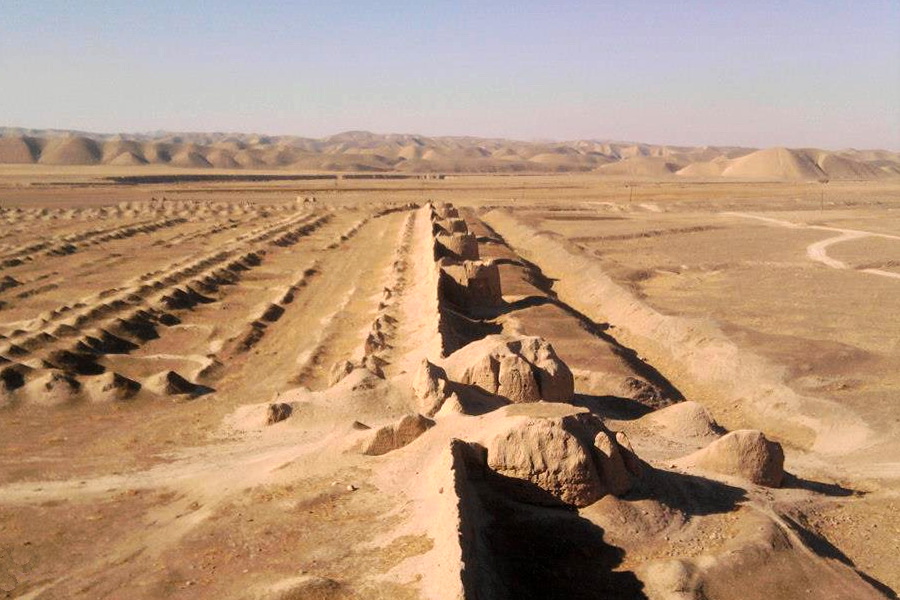Nadir Shah Fortress, near Ashgabat

The fortress of Nadir Shah, also known as Hiveabad, is an 18th-century historical monument named after the renowned Iranian commander, often called the second Alexander the Great by some historians. Located 150 kilometers southeast of Ashgabat, it sits just 4 kilometers from the Iranian border, and 20 kilometers to the north lies the more popular Abiverd settlement.
Built in the 1730s by order of Nadir Shah at the entrance to a narrow gorge in the Kopetdag Mountains, the fortress was meant to protect the northern road to his residence in Kelat (Kalat). Sixteen thousand inhabitants from Khiva, 500 km to the north, were brought in to settle the fortress, thus naming it Khiveabad. Today, a small village with the same name exists 1 km south of the fortress ruins. For a century, the fortress thrived and served as an important transportation hub between Iran and Central Asia. By the end of the 19th century, the fortress was abandoned, the Lainsu River changed course, eroding part of the southern wall.
Nadir Shah fortress in Turkmenistan has a diamond shape with sides of 650 meters, covering an area of 42 hectares. The walls are about 3 meters high, with 52 round towers along them. In the center of each wall was a gate aligned with the cardinal directions. The central part of the fortress featured a square citadel with sides of 160 meters, surrounded by numerous one-story buildings. Near the northern gate lies a small hill, once the fortress's lookout tower. After a century of abandonment, only the deteriorating foundations of the houses and the outer walls remain.
The fortress was explored in 1927 and 1948, but no significant artifacts were discovered. Archaeologists and historians have only determined its construction date and historical significance.
